Discover 50 hidden attractions, cool sights, and unusual things to do in Hungary. Don't miss out on these must-see attractions: Heroes' Square (Budapest), Szechenyi Baths (Budapest) or St. Stephen's Basilica (Budapest).
Below, you can find the list of the most amazing places you should visit in Hungary.
Table of Contents
Heroes' Square, Budapest

Also known as: Hősök tere
Major square with landmark statues. Hősök tere, lit. Heroes' Square, is one of the major squares in Budapest, Hungary, noted for its iconic Millennium Monument with statues featuring the Seven chieftains of the Magyars and other important Hungarian national leaders, as well as the Memorial Stone of Heroes, often erroneously referred as the Tomb of the Unknown Soldier. The square lies at the outbound end of Andrássy Avenue next to City Park. It hosts the Museum of Fine Arts and the Palace of Art. The square has played an important part in contemporary Hungarian history and has been a host to many political events, such as the reburial of Imre Nagy in 1989. Most sculptures were made by sculptor György Zala from Lendava, with one made by György Vastagh.
In Budapest there are three more squares named Hősök tere, 'Heroes' Square', in the districts or neighbourhoods of Soroksár, Békásmegyer and Rákosliget.[1]
Address: Hősök tere, 1146 Budapest (Terézváros)
Szechenyi Baths, Budapest
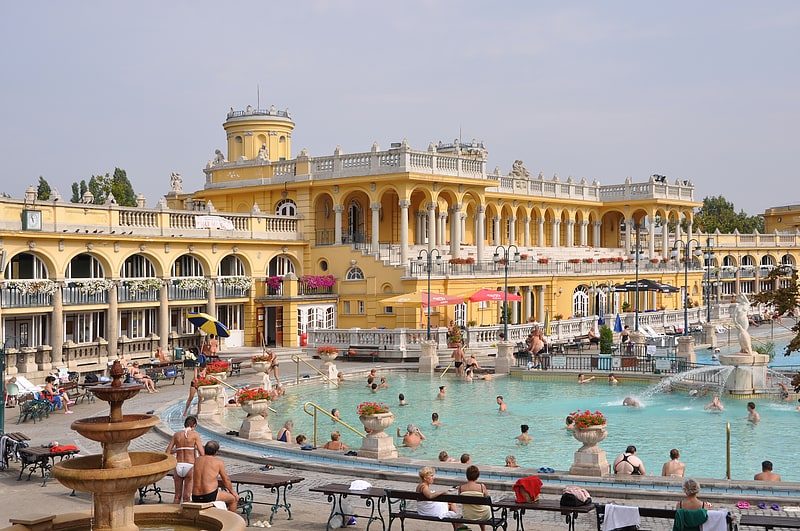
Also known as: Széchenyi gyógyfürdő
Grand spa with in- and outdoor pools. The Széchenyi Medicinal Bath in Budapest is the largest medicinal bath in Europe. Its water is supplied by two thermal springs, their temperature is 74 °C and 77 °C.
Components of the thermal water include sulfate, calcium, magnesium, bicarbonate and a significant amount of metaboric acid and fluoride.[2]
Address: Allatkerti korut 9-11, 1146 Budapest (Zugló)
St. Stephen's Basilica, Budapest
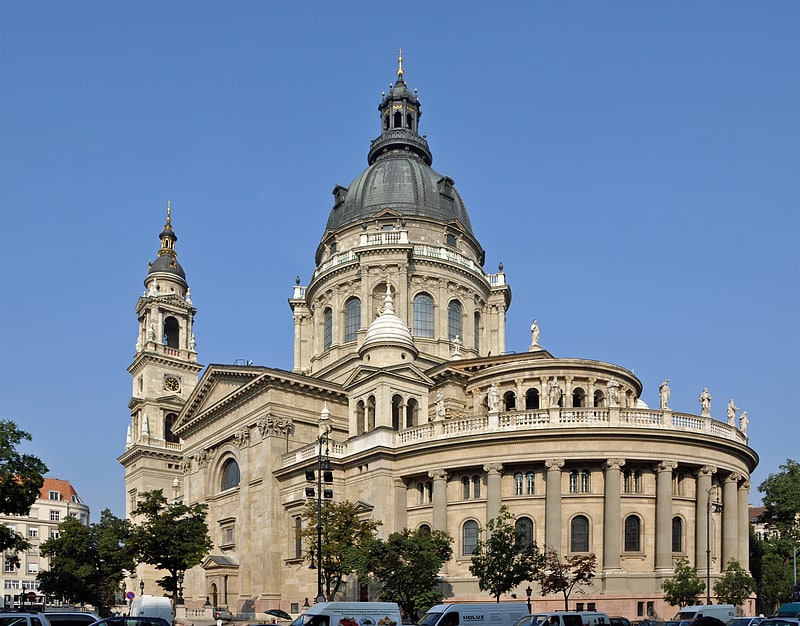
Also known as: Szent István-bazilika
Grand church with regular concerts. St. Stephen's Basilica is a Roman Catholic basilica in Budapest, Hungary. It is named in honour of Stephen, the first King of Hungary, whose right hand is housed in the reliquary. It was the sixth largest church building in Hungary before 1920. Since the renaming of the primatial see, it has been the co-cathedral of the Roman Catholic Archdiocese of Esztergom-Budapest. Today, it is the third largest church building in present-day Hungary.[3]
Address: Szent István tér 1, 1051 Budapest (Belváros-Lipótváros)
Pannonhalma Archabbey, Győr
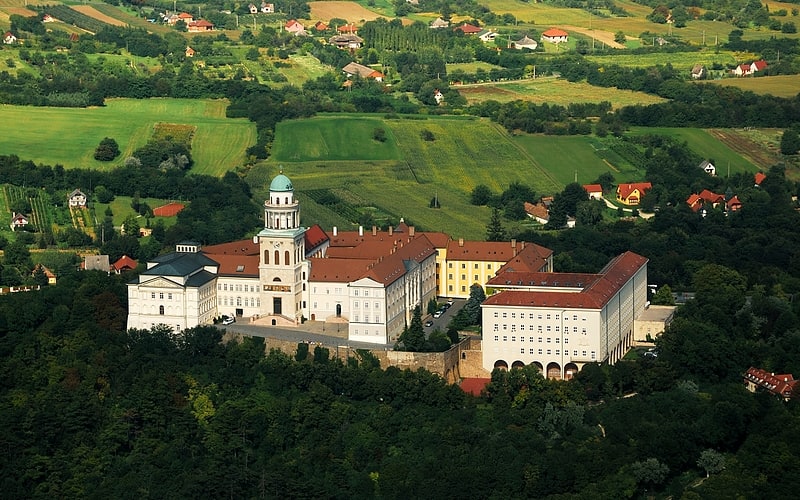
Also known as: Pannonhalmi Bencés Főapátság
Building in Pannonhalma, Hungary. The Benedictine Pannonhalma Archabbey or Territorial Abbey of Pannonhalma is a medieval building in Pannonhalma, one of the oldest historical monuments in Hungary. Founded in 996, it is located near the town, on top of a hill. Saint Martin of Tours is believed to have been born at the foot of this hill, hence its former name, Mount of Saint Martin, from which the monastery occasionally took the alternative name of Márton-hegyi Apátság. This is the second largest territorial abbey in the world, after the one in Monte Cassino.
Its sights include the Basilica with the Crypt (built in the 13th century), the Cloisters, the monumental Library with 360,000 volumes, the Baroque Refectory (with several examples of trompe-l'œil) and the Archabbey Collection (the second biggest in the country).
Today there are about 50 monks living in the monastery. The abbey is supplemented by the Benedictine High School, a boys' boarding school.[4]
Address: Var 1., 9090 Pannonhalma
Cathedral of Our Lady of Hungary, Szeged

Also known as: Fogadalmi templom
Catholic church built from 1914 and 1930. The Votive Church and Cathedral of Our Lady of Hungary is a twin-spired church in Szeged. It lies on Dóm square beside the Dömötör tower. Construction began in 1913, but due to the outbreak of the First World War, it was not completed until 1930. The church serves as the cathedral of the Roman Catholic Diocese of Szeged–Csanád.[5]
Address: Dóm tér 15, 6720 Szeged
Esztergom Basilica, Esztergom
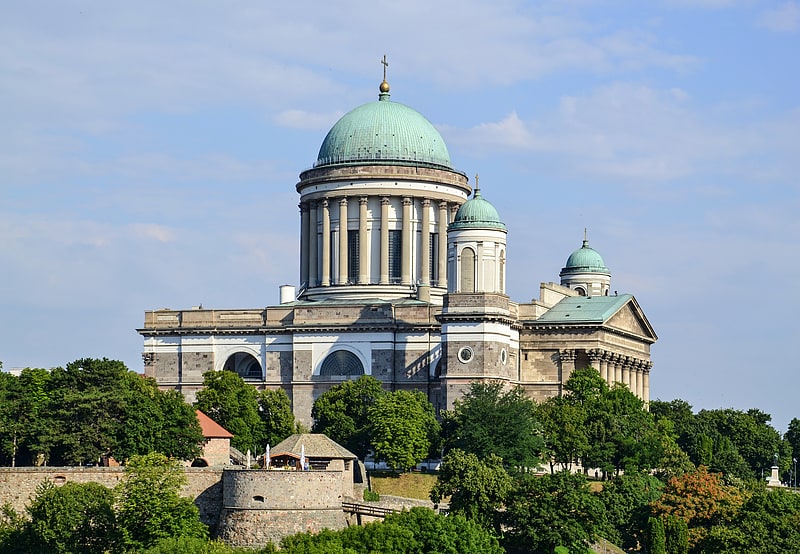
Also known as: Esztergomi bazilika
Vast Roman Catholic place of worship. The Primatial Basilica of the Assumption of the Blessed Virgin Mary and St Adalbert, also known as the Esztergom Basilica, is an ecclesiastic basilica in Esztergom, Hungary, the mother church of the Archdiocese of Esztergom-Budapest, and the seat of the Catholic Church in Hungary. It is dedicated to the Assumption of Saint Mary and Saint Adalbert.
It is the largest church and the tallest building in Hungary. Its inner area is 5,600 m². It is 118 m long and 49 m wide. It has a reverberation time of more than 9 seconds. Its dome, forming a semi-sphere, is situated in the middle, and it has 12 windows. It is 71.5 m high inside (which makes it one of the tallest domes in the world), with a diameter of 33.5 metres, and is 100 m high from outside, the stairs count 400 steps counted from the crypt.
The altarpiece (13.5 × 6.6 metres, depicting the Assumption of the Blessed Virgin Mary, by Girolamo Michelangelo Grigoletti) is the largest painting in the world painted on a single piece of canvas.
The basilica is also known for Bakócz Chapel (named after Tamás Bakócz), built by Italian masters between 1506–1507 out of red marble of Süttő, its walls adorned with Tuscan Renaissance motifs. It is the most precious remaining example of Renaissance art in Hungary.
The huge crypt, built in Old Egyptian style in 1831, is today the resting place of late archbishops, among others, József Mindszenty, famous for his opposition to both Nazi and Communist rule.[6]
Address: Szent István tér 1, 2500 Esztergom
Yakovalı Hasan Paşa Mosque, Pécs

The Yakovalı Hasan Paşa Mosque is a late 16th-century mosque in Pécs, southern Hungary. It was constructed when the region was part of the Turkish Ottoman Empire, around the same time as the main mosque of Pécs, the Mosque of Pasha Qasim. It was named after the local government official who commissioned the mosque, Yakovalı Hasan Paşa. It is thus one of the oldest mosques existing in Hungary today. The mosque is still active as a Muslim place of worship, and also houses a small exhibition centre for Turkish handicraft and historical artifacts documenting Hungary's Ottoman past.[7]
Address: 2 Rákóczi út, Pécs
Pécsi Nemzeti Színház, Pécs
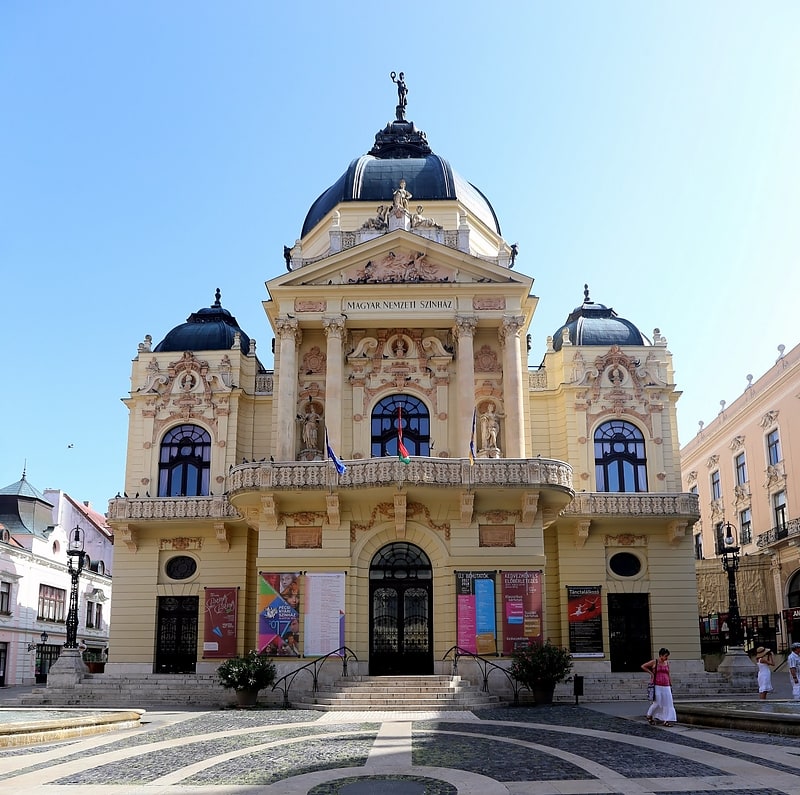
Theatre in Pécs, Hungary. The National Theatre of Pécs is the main theatre of Pécs, Hungary.[8]
Address: Pécs, Színház square 1
Mosque of Pasha Qasim, Pécs
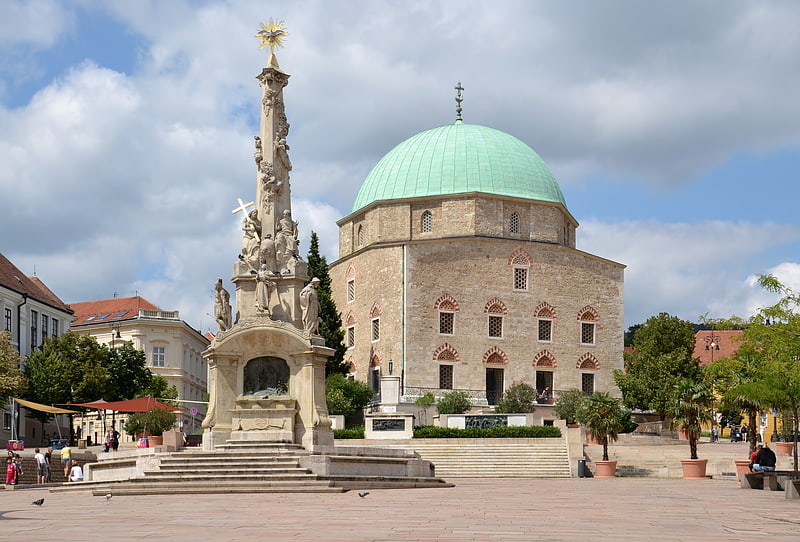
Also known as: Gázi Kászim pasa dzsámija
Domed Catholic church in a former mosque. The Downtown Candlemas Church of the Blessed Virgin Mary, formerly known as the Mosque of Pasha Qasim is a Roman Catholic church in Pécs, Hungary, which was a mosque in the 16–17th century due to the Ottoman conquest. It is one of the symbols of the city, located in the downtown, on the main square. The current building, a hundred steps in length and in width, was built by Pasha Qasim the Victorious between 1543 and 1546. The mosque was converted to a church in 1702, after Habsburg-Hungarian troops reconquered the city. The minaret was destroyed by the Jesuits in 1766. One of the largest Ottoman constructions remaining in Hungary, the building still retains many Turkish architectural characteristics.[9]
Address: Szechenyi ter, 7621 Pecs
Royal Palace, Gödöllő
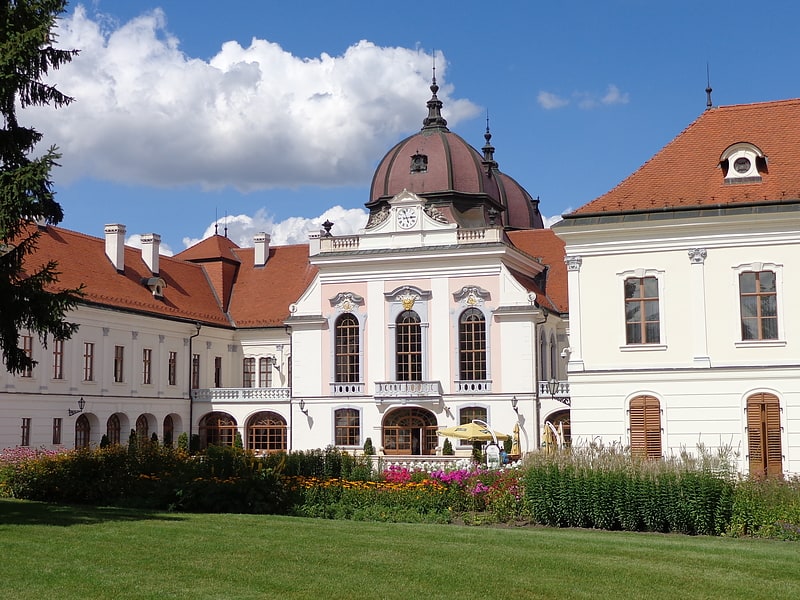
Also known as: Grassalkovich-kastély
Baroque palace with period furnishings. The Royal Palace of Gödöllő or Grassalkovich Castle is an imperial and royal Hungarian palace located in the municipality of Gödöllő in Pest county, central Hungary. It is famous for being a favourite place of Queen Elisabeth of Hungary.[10]
Address: Grassalkovich-kastély 5852, 2100 Gödöllő
Móra Ferenc Múzeum, Szeged
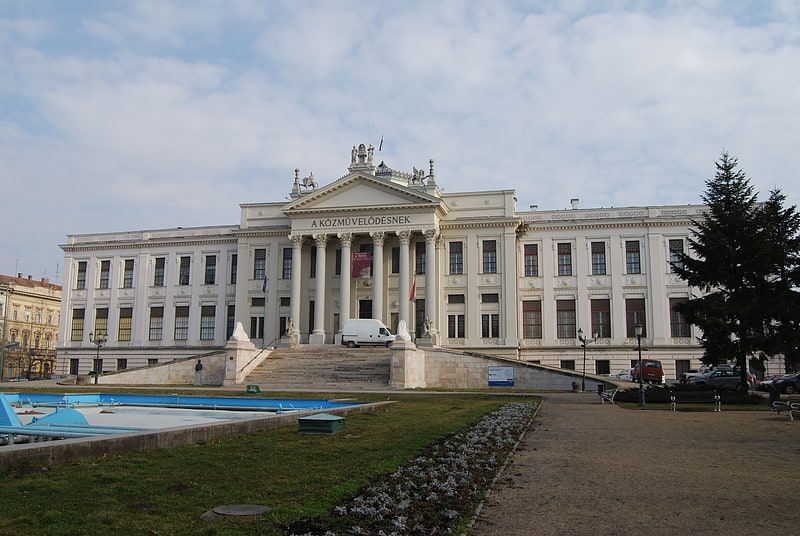
Museum in Szeged, Hungary. The Móra Ferenc Museum is a museum in Szeged, Hungary. The museum stands at the intersection of the bank of the river Tisza and the city's Downtown Bridge. In addition to its seasonal exhibitions, archaeological, ethnographic, historical, and scientific research is conducted at the museum. The museum was founded in 1883, and the neoclassical building was opened in 1896. The institute was renamed in the honor of its former Director, Móra Ferenc in 1950.
The work of renowned artists Victor Vasarely and Tivadar Csontváry Kosztka have been displayed in the Móra Ferenc Museum, and in 2012, an exhibition featuring the works of Mihály Munkácsy became the museum's then most successful seasonal exhibition. This record was exceeded in 2014 by an exhibition titled “Pharaohs’ Egypt” which attracted more than 114,000 visitors by year’s end.[11]
Address: Roosevelt ter 1-3., 6720 Szeged
Church of St. Nicholas, Szeged
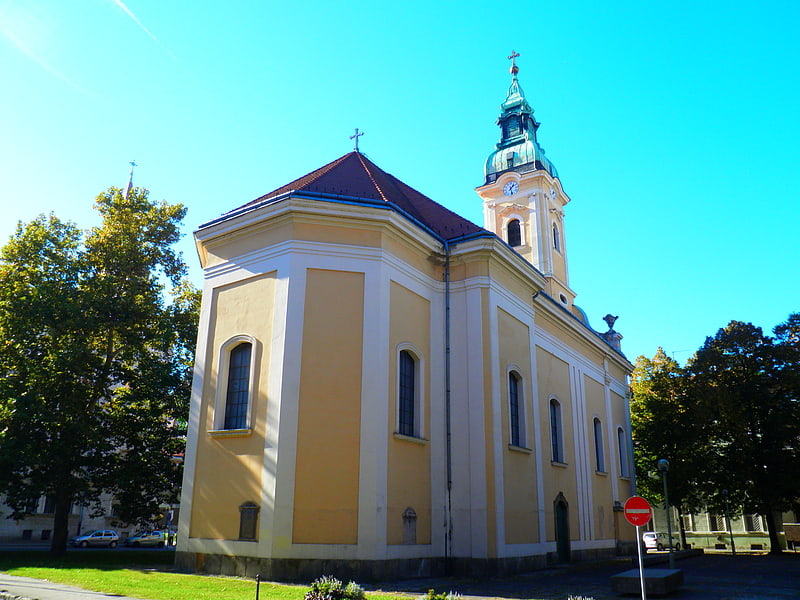
Also known as: Szegedi Szent Miklós szerb ortodox templom
The Church of St. Nicholas, is a Serbian Orthodox church in Szeged, Hungary.[12]
Address: Somogyi u. 3, 6720 Szeged
Festetics Palace, Keszthely
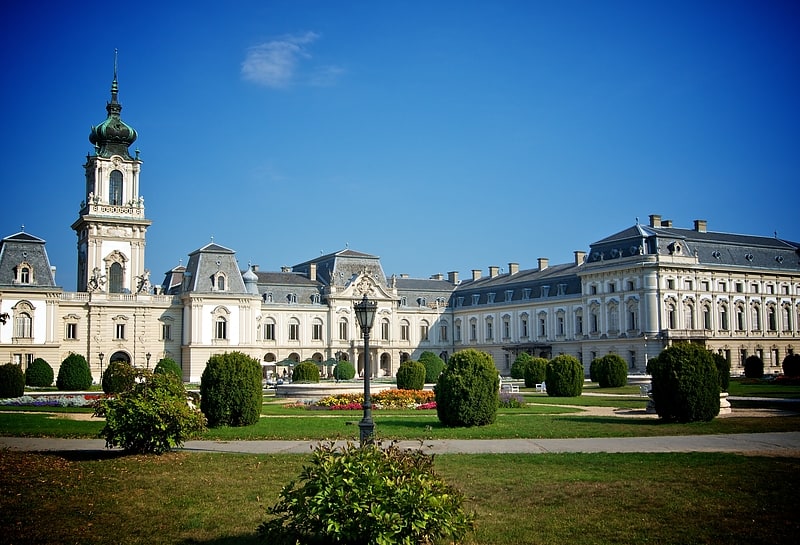
Also known as: Festetics-kastély
Palace in Keszthely, Hungary. The Festetics Palace is a Baroque palace located in the town of Keszthely, Zala, Hungary. The building now houses the Helikon Palace Museum.
The palace's construction, started by Kristóf Festetics in 1745, lasted more than a century. During this time, the palace, built at first on the foundations of a ruined castle, was tripled in size in two subsequent building campaigns, most recently in the 1880s, to designs by Viktor Rumpelmayer, living in Vienna.
When Rumpelmayer died in 1885, the work was carried to completion by architects Gusztáv Haas and Miksa Paschkisch. The result is one of the three largest country houses in Hungary.[13]
Address: Kastely utca 1, 8360 Keszthely
Castle of Eger, Eger
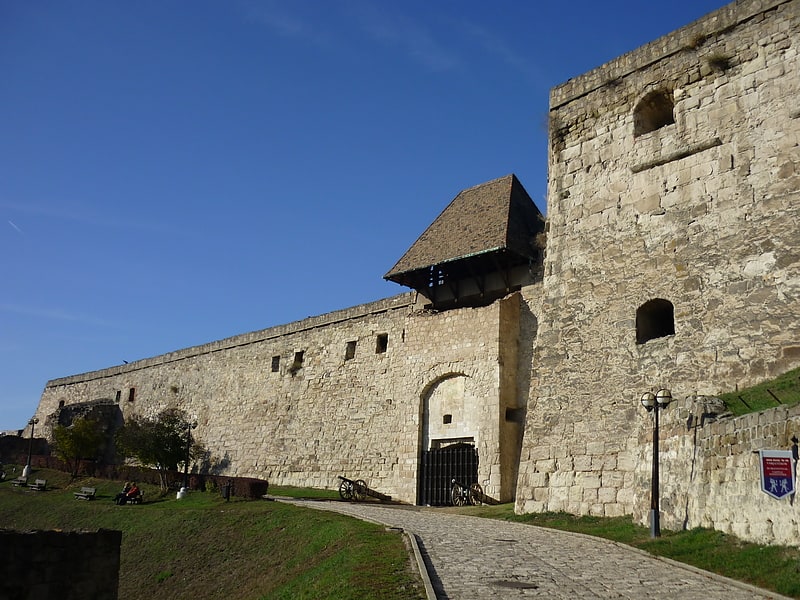
Also known as: Egri vár
Medieval fortress with views and museum. The Eger Castle is a castle in Eger, Hungary. Historically, it is known for repelling the Turkish attack in 1552 during the Siege of Eger.[14]
Address: Vár 1, 3300 Eger
Castle of Diósgyőr, Miskolc

Also known as: Diósgyőri vár
Medieval castle with hands-on displays. The Castle of Diósgyőr is a medieval castle in the historical town of Diósgyőr which is now part of the Northern Hungarian city Miskolc. The first Castle of Diósgyőr was built probably in the 12th century and was destroyed during the Mongol invasion. The current, Gothic castle was built after the invasion and reached the peak of its importance during the reign of King Louis the Great. Later it became a wedding gift for the queens of Hungary, which it remained until the Ottoman invasion of Hungary in the 16th century. By the end of the 17th century it was already in ruins. Archaeological excavations were made from the 1960s. In 2014 the castle was restored, the rooms are furnished with Mediaeval-style furniture.[15]
Address: Vár u. 24, 3534 Miskolc
Urban Public Transport Museum, Szentendre
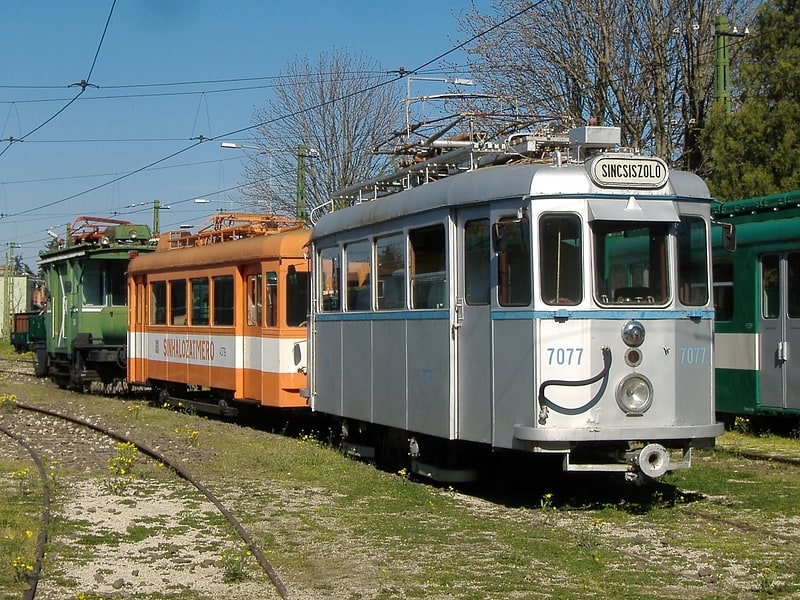
The Urban Public Transport Museum of the Budapesti Közlekedési Zrt. is located in Szentendre, Hungary. The museum opened on July 14, 1992, with five exhibition halls and two showrooms, as well as an open exhibition space in front of the halls. It is open every year from April to October, the entrance fee is one line ticket for adults and one metro ticket for children and pensioners. It is next to the H5 HÉV terminus and the local Volánbusz bus station.[16]
Address: Dózsa György út 3., 2000 Szentendre
Cave Bath, Miskolc
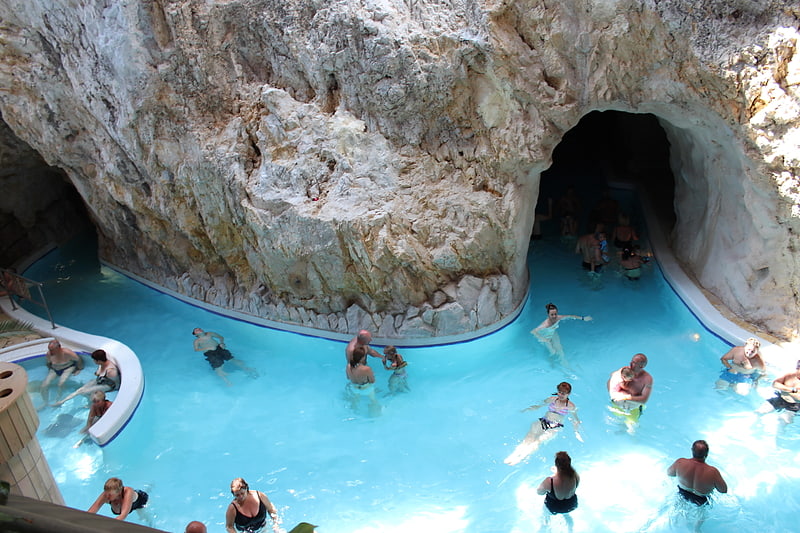
Also known as: Barlangfürdő
Spa in Miskolc, Hungary. The Cave Bath (Hungarian: Barlangfürdő [17]
Address: Pazár sétány 1., 3519 Miskolc
Mária Valéria Bridge, Esztergom
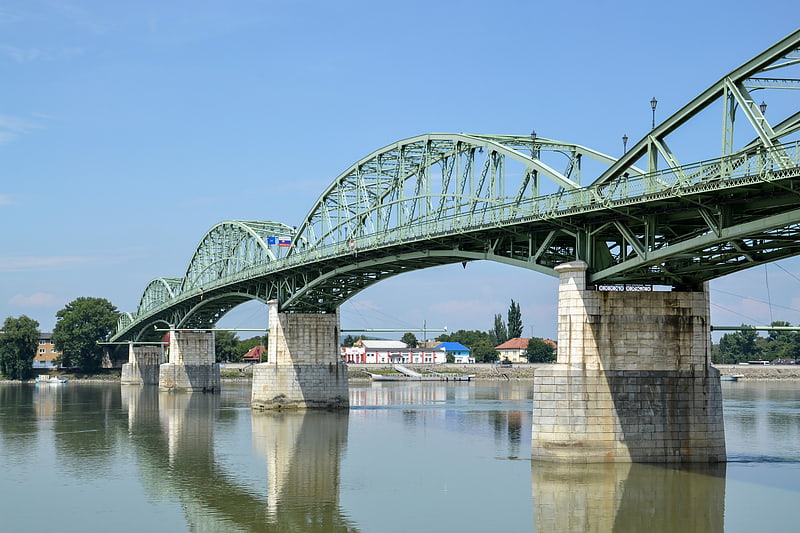
Also known as: Mária Valéria híd
Bridge in Europe. The Mária Valéria Bridge joins Esztergom in Hungary and Štúrovo in Slovakia, across the River Danube. The bridge is some 500 metres in length. It is named after Archduchess Marie Valerie of Austria, the fourth child of the Emperor of Austria-Hungary, Franz Josef and Elisabeth.
The bridge was designed by János Feketeházy in 1893; he built several bridges on the Danube, including the Liberty Bridge (originally the Franz Joseph Bridge) in Budapest and the Elisabeth Bridge between Komárno and Komárom. Since its opening on 28 September 1895, the bridge has been destroyed twice. On 22 July 1919 the bridge was destroyed by a detonation at its first pier on its western side but the bridge was renovated in 1922 and completely reconstructed in 1926. During World War II, retreating German troops blew up the bridge on 26 December 1944 along with other bridges near Esztergom.
Decades of intransigence between the Communist governments of Hungary and Czechoslovakia meant that the bridge was not rebuilt until the new millennium, finally reopening on 11 October 2001. Half the costs of the project were covered by a 10 million Euro grant from the European Union, as part of the EU PHARE project to assist applicant countries in their preparations to join the EU. The re-opening was marked with the issue of a Slovak stamp. The rebuilding of the bridge helped the local economy in the Ister-Granum Euroregion.
As Slovakia and Hungary are part of the Schengen Area there are no border controls on the bridge. Both countries became part of the Schengen Area on 12 December 2007, allowing all immigration and customs checks to be lifted.
As a young man, the writer Patrick Leigh Fermor walked from the Hook of Holland to Constantinople in 1933/34. His book A Time of Gifts ends on the bridge and the second volume, Between the Woods and the Water, begins with him crossing into Esztergom.[18]
Address: Nagy-Duna sétány, 2500 Esztergom
Anna Cave, Miskolc
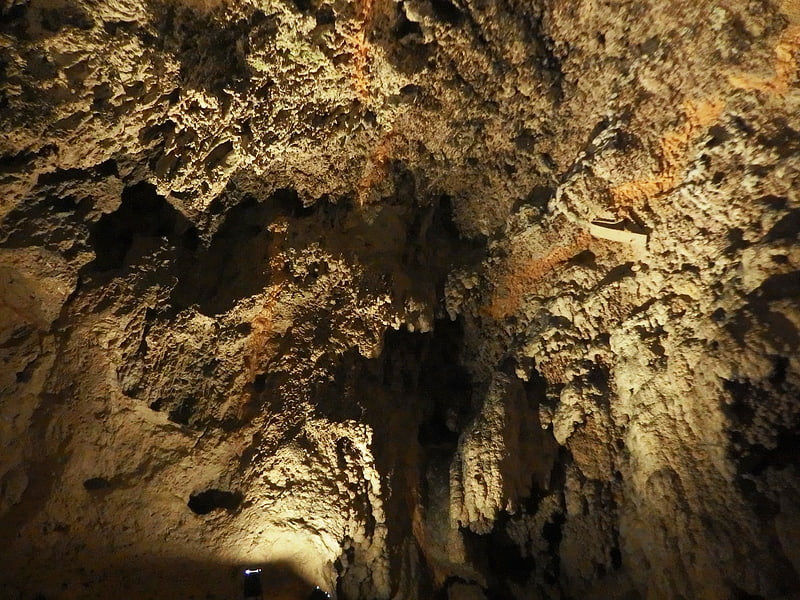
Also known as: Anna-barlang
Cave in Hungary. The Anna Cave is a natural limestone cave in Miskolc-Lillafüred, Hungary, near the waterfall.
The cave was discovered in 1833, when opening a shaft in the limestone in order to provide the iron furnace at Hámor with water. It soon became a tourist attraction, even Sándor Petőfi visited it in 1847. However, in the second part of the century, when the iron furnaces were closed, the cave was forgotten.
It was opened again in 1912. In 1927, when the Palace Hotel was built, new caverns were found. The entrance that's used today was constructed then.
The cave has not only nice limestone structures, but also plant fossils.
The cave can be visited all year round.[19]
Hungarian Open Air Museum, Szentendre
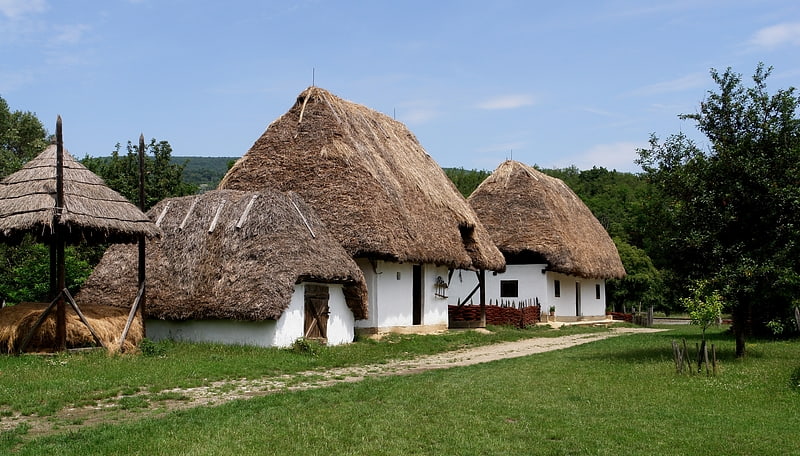
Also known as: Szentendrei Szabadtéri Néprajzi Múzeum
Museum in Szentendre, Hungary. The Hungarian Open Air Museum is Hungary’s largest outdoor collection, founded in 1967. The open-air museum shows Carpathian folk architecture and life in various areas of Hungary.
Inspired by the creation of Skansen, established in Stockholm in 1891, the Hungarian facility in Szentendre was founded in 1967 after years of preparation by ethnographers. Opened as the "Village Museum Department" of the Budapest Ethnographic Museum, in 1972 it became independent. The museum has an area of 46 hectares at Sztaravoda.
There are eight areas of the museum:
- North Hungarian Village
- Upland Market Town
- Upper-Tisza
- Great Plains
- Southern Transdanubia
- Bakony, Balaton Uplands
- Western Transdanubia
- Kisalföld
Address: Sztaravodai út, Szentendre
Cathedral Basilica of St. John the Apostle, Eger
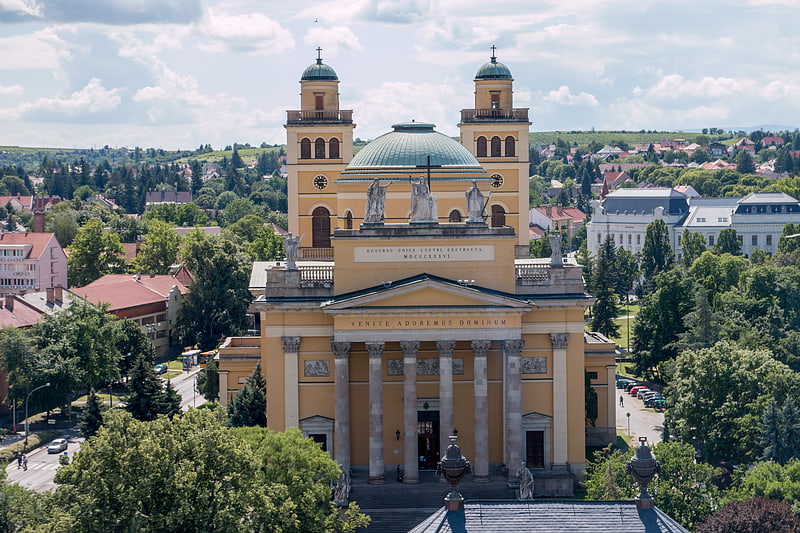
Also known as: Egri főszékesegyház
Cathedral in Eger, Hungary. The Cathedral Basilica of St. John the Apostle or more formally Metropolitan Cathedral Basilica of St. John the Apostle and Evangelist, St. Michael and the Immaculate Conception also called Eger Cathedral is a religious building affiliated with the Catholic Church that functions as the cathedral of the Archdiocese of Eger, located in the city of Eger, in Hungary.
The cathedral was built between 1831 and 1837 by József Hild, commissioned by Archbishop János László Pyrker.
The cathedral is a basilica with three naves. In the middle between the nave and chancel to the east is the transept. The dome of the cathedral, 40 meters above ground, is lavishly decorated. At the rear are the two bell towers. The portal on the eastern porch is designed like a Greek temple. The monumental entrance is decorated with statues of saints: St. Stephen, St. Ladislaus, and Saints Peter and Paul. The facade is supported by Corinthian columns that reach a height of 17 meters.[21]
Address: Pyrker tér 1., 3300 Eger
Christian Museum, Esztergom
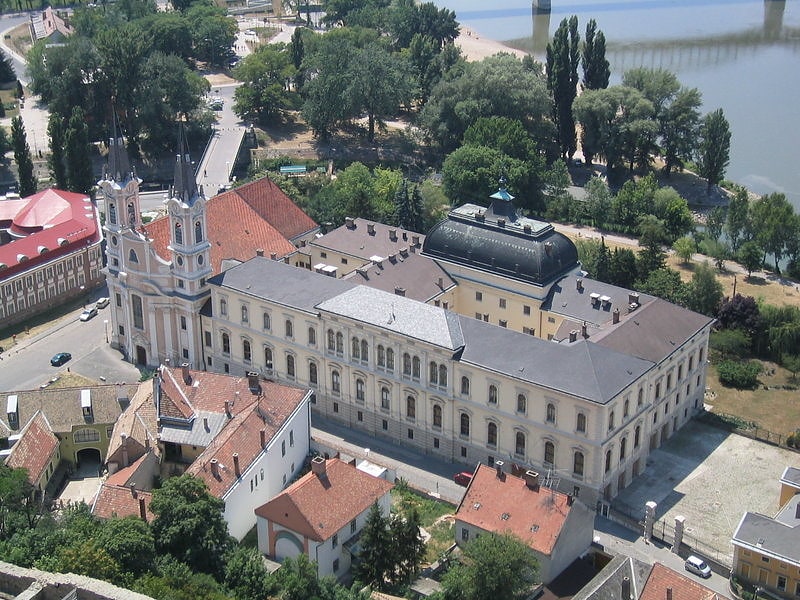
Also known as: Keresztény Múzeum
Museum in Esztergom, Hungary. The Christian Museum is the largest ecclesiastical collection in Hungary; it conserves European and Hungarian works of art from the period between the 13th and 19th centuries.
The permanent exhibition of the Christian Museum is situated on the second floor of the Primate's Palace in Esztergom-Víziváros, on the bank of the Danube river.
The extensive collections of Hungarian, Italian, Dutch, German and Austrian paintings make this museum the third most important picture gallery in Hungary. Many works of art come from the territory of present-day Slovakia in which area part of the archdiocese of Esztergom lay at the time of the formation of the collection (the 1870s). Besides late medieval and Renaissance works of art — including the Calvary Altarpiece by Thomas of Coloswar, the Lord's Coffin from Garamszentbenedek, and the Passion scenes by Master MS — the baroque and modern collections, the collection of the decorative arts, and the collection of prints and drawings are significant.[22]
Address: Mindszenty hercegprímás tere 2, 2500 Esztergom
Cathedral Basilica of the Assumption of Our Lady, Győr
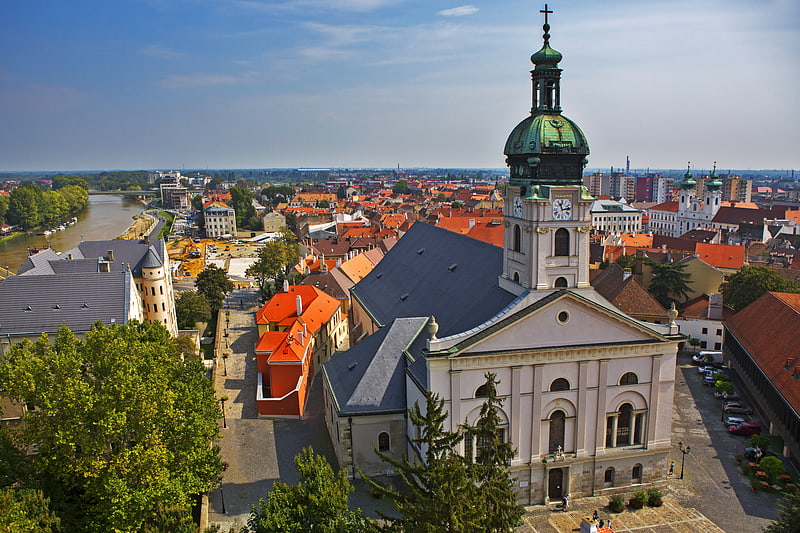
Also known as: Győri bazilika
Cathedral. The Cathedral Basilica of the Assumption of Our Lady also called Győr Cathedral It is a Catholic temple that serves as Cathedral Basilica in Győr, Hungary, being the seat of the Diocese of Győr.
The early 11th century Romanesque church was destroyed by the Mongols and rebuilt from the thirteenth to the fifteenth century. After the expulsion of the Turks the interior was redesigned between 1635 and 1650 by the Italian master Giovanni Battista Rava in the early Baroque style. The tower was completed only in 1680. The complete work of the church lasted until the 1770s The last restoration was carried out between 1968 and 1972. The cathedral obtained in 1997 the status of Minor Basilica, awarded by Pope John Paul II.
Pulpit
The pulpit belongs to the definitive period of the interior when the most important Baroque features were added under Bishop Count Ferenc Zichy in the 1770s. Its architect and sculptor remains unknown but it is attributed to Melchior Hefele. The classicizing late Baroque structure was built at the first pillar of the nave on the left side. It was made of red marble with a marble side stair supported by a pillar; the main support forms a Doric column with a fluted shaft.
The pulpit itself is shaped like a shell with a solid parapet articulated by panels and pilasters and decorated with gilt wooden carvings of rosettes, bay leaf garlands and acanthus leaves. The wrought-iron railing was made in 1783 by a craftsman who incised the date and his initials (J.K.) into the doorway post. The railing and the door are richly decorated with roses, garlands, leaves and bows. The abat-voix is painted woodwork with dark yellow marbleizing, decorated with rosettes, brackets and leaves. On the underside there is a silvery dove surrounded by a meander strip; on the top an allegorical female statue representing the Church is holding a chalice and a church model. The canopy-like base of the statue is decorated with wreathes and it is surrounded by four putti holding the Tablets of Stone and the cross, flanked by flowering urns. The statues of the abat-voix were created in a more traditional Baroque taste than the other parts of the pulpit which already show the growing influence of Neoclassicism.[23]
Address: Bécsi kapu tér 11. fszt/3, Győr
Érsekkert, Eger
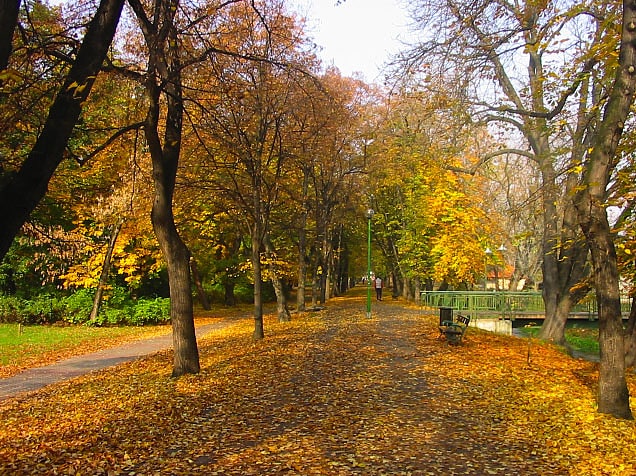
Park in Eger, Hungary. Archbishop's Garden is a park in Eger, Hungary, that covers about 12 hectares.[24]
Address: Klapka György út 9., 3300 Eger
Nyíregyházi Állatpark, Nyíregyháza
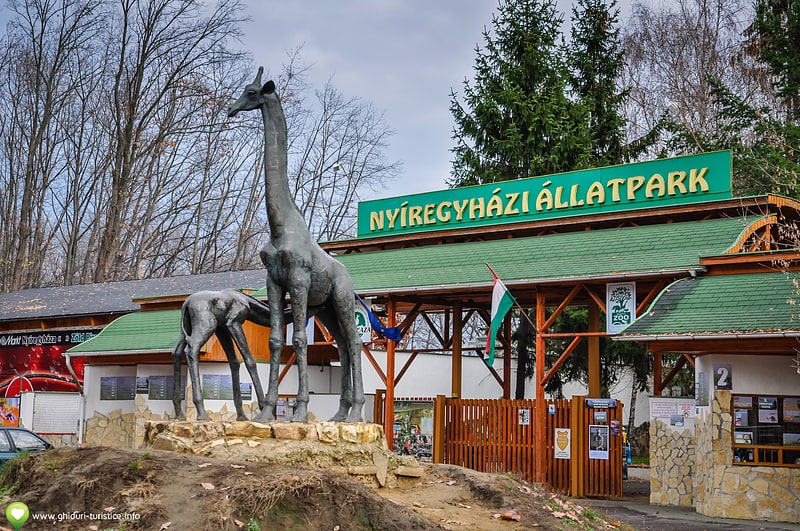
Zoo in Nyíregyháza, Hungary. The Nyíregyháza Zoo is located 5 km north of Nyíregyháza, Hungary in the Sóstó recreation area, which also includes the beach, the spa, the pool, the open-air museum, and the wood parks.
The zoo lies in a natural, almost untouched oak forest. In the 30-hectare area of the zoo, the visitors find themselves in continents, so that one that enters can walk along them to observe how the animals live in certain parts of the world. The visitors can have some rest in Hotel Dzsungel (Hotel Jungle).[25]
Address: Sóstói út, 4400 Nyíregyháza
Szelim cave, Tatabánya
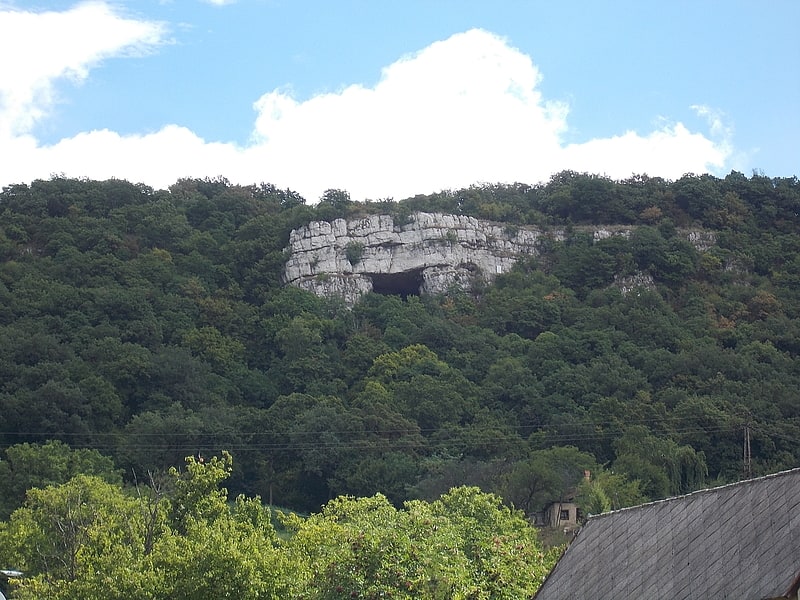
Also known as: Szelim-lyuk
Tourist attraction in Tatabánya, Hungary. The Szelim cave is located in northwestern Hungary at the western margin of the Gerecse Mountains, 289 m above the Által-ér Valley near Tatabánya city. The cave interior is 45 m long and 14 m high. The site has been regularly frequented and used as a shelter by local villagers over the centuries, is easily accessible and its huge rectangular entrance features a memorial of the Turul.[26]
Great Church, Debrecen
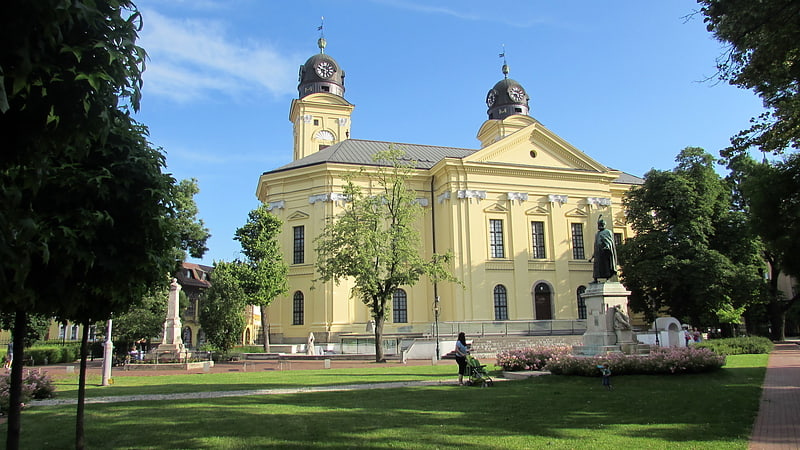
Also known as: Református nagytemplom
Vast, 19th-century neoclassical church. The Reformed Great Church or Great Reformed Church in Debrecen is located in the city of Debrecen. It stands in the city centre, between Kossuth square and Kálvin square. It is the symbol of the Protestant Church in Hungary, and it is because of this church that Debrecen is sometimes referred to as "the Calvinist Rome". With a ground space of 1500 m² it is the largest Protestant church in Hungary. It also has the largest bell of all Hungarian Protestant churches. The Great Church was built between 1805 and 1824 in the neoclassical style.[27]
Address: Kossuth tér 1, 4026 Debrecen
Annagora Aquapark, Balatonfüred

Water park in Balatonfüred, Hungary. Annagora Aquapark is a water park in Balatonfüred spa town, near the Lake Balaton in Hungary.
Included are 3 water slides for children, 12 big slides and students with ISIC card receive a discount.[28]
City Hall of Kecskemét, Kecskemét
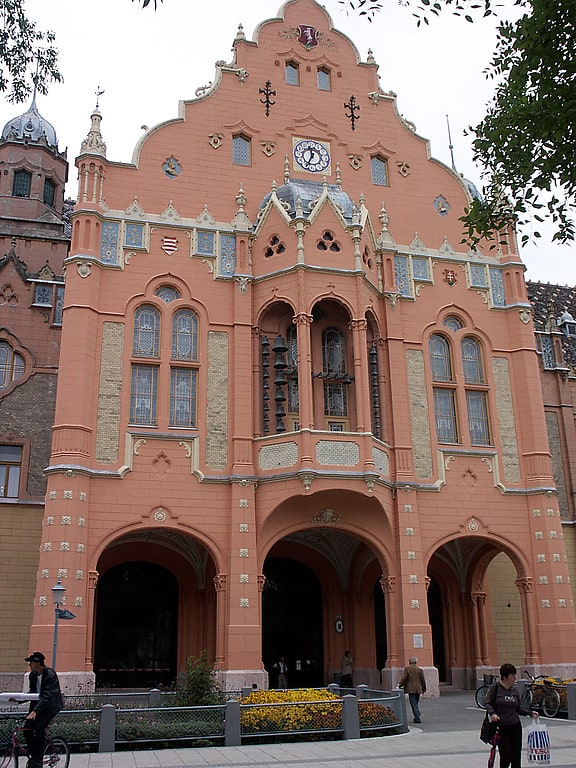
Also known as: Városháza
City or town hall in Kecskemét, Hungary. The City Hall of Kecskemét is a city hall building located in the Kossuth Square, of Kecskemét, in the Bács-Kiskun County, Hungary.
The current building was built between 1893 and 1897 in the Art Nouveau style. It was designed by Ödön Lechner and Gyula Pártos.[29]
Address: Kossuth ter 1, Kecskemét
Csobánc, Tapolca
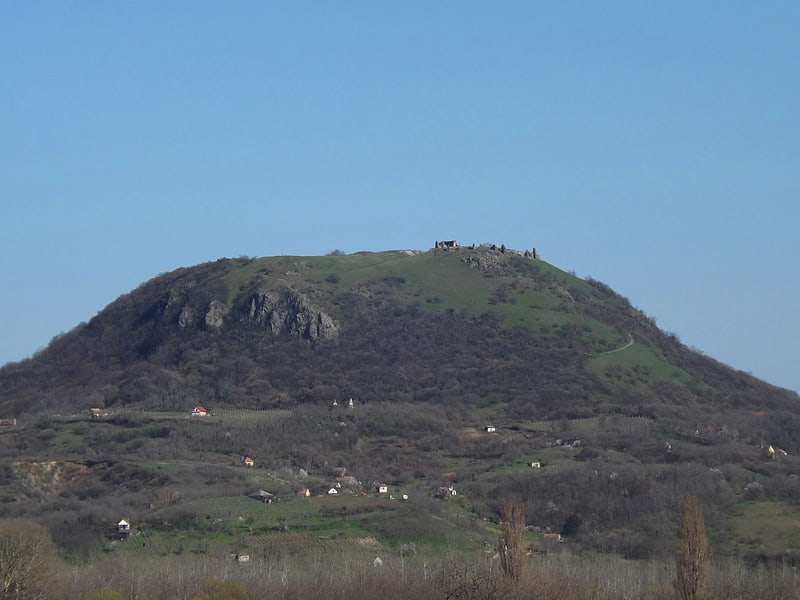
Hill in Hungary. Csobánc is a hill in the Tapolca Basin, Hungary.[30]
Basilica of the Assumption of the Blessed Virgin Mary, Székesfehérvár
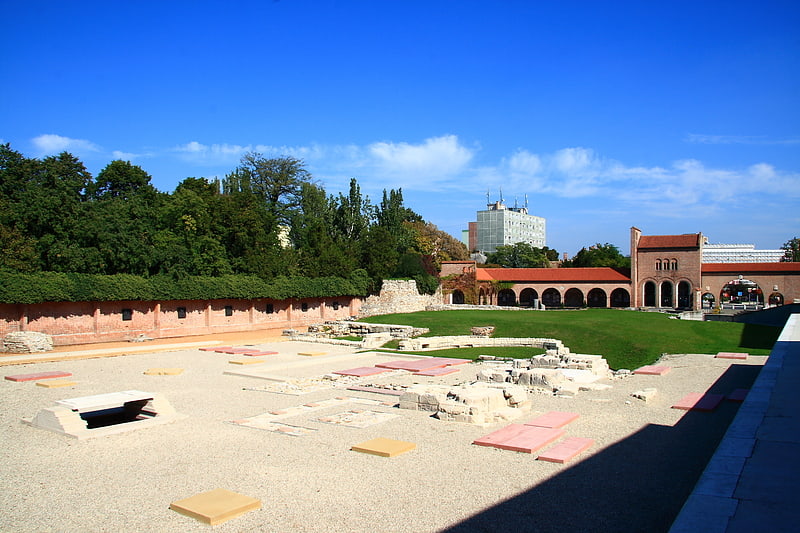
Also known as: Nagyboldogasszony-bazilika
Basilica in Székesfehérvár. The Basilica of the Assumption of the Blessed Virgin Mary was a basilica in Székesfehérvár, Hungary. From the year 1000 until 1527, it was the site of the coronation of the Hungarian monarch. After the Ottomans occupied the city in 1543, coronations of the Hungarian monarch moved elsewhere; the building was extensively damaged in a fire in 1601. It was replaced by the Cathedral Basilica of Székesfehérvár in 1777.[31]
Address: Koronázó tér, 8000 Székesfehérvár
Győri Nemzeti Színház, Győr
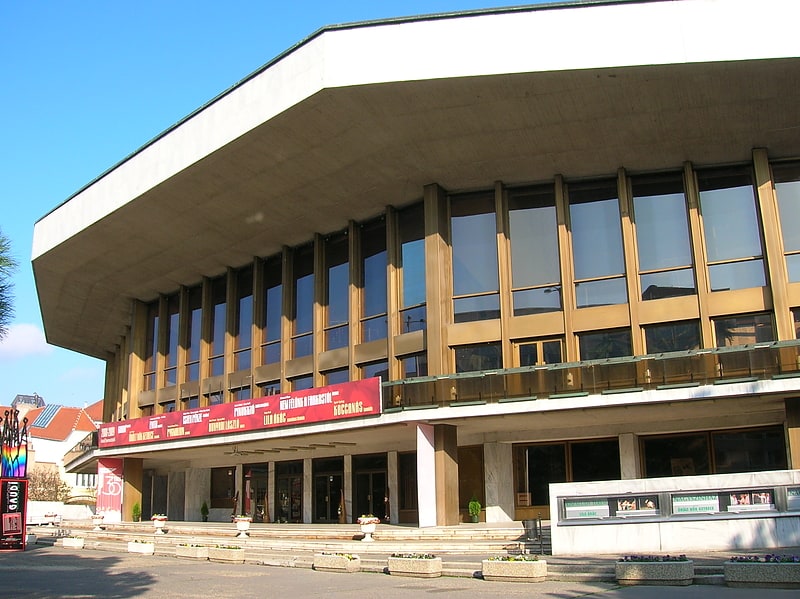
Theatre in Győr, Hungary. The National Theatre of Győr is a theatre in Győr, Hungary. Opened on 2 November 1978, it is the main theatre of the Győr-Moson-Sopron region. Until January 1, 1992, it bore the name Kisfaludy Károly Theatre. In 2008 the number of visitors was 128,283, thus the theatre ranks as the 6th most visited in the country.[32]
Address: Győr, Czuczor Gergely street 7.
Libas Beach or Goosy Shore, Keszthely

Beach
Address: Libás Strand, 8360 Keszthely
Csokonai Theatre, Debrecen
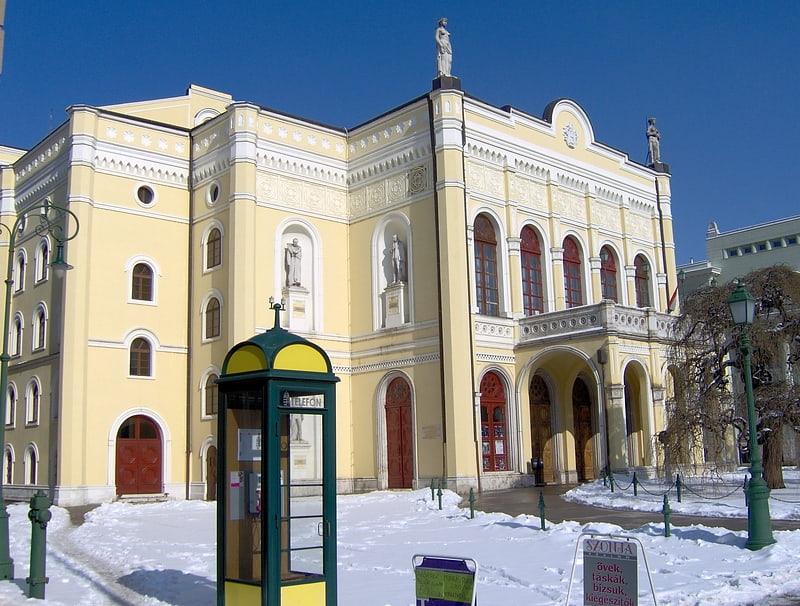
The Csokonai Theatre is the oldest and largest theatre in Debrecen, Hungary. It was named after one of the first Hungarian Modern Age playwrights, Mihály Csokonai, who lived and created many of his works in Debrecen. The building was designed by Antal Szkalnitzky with Moorish styled ornamentations, the theatre opened on Kossuth Lajos utca in 1865, with Róza Laborfalvi as Gertrude in a performance of József Katona's 1819 play Bánk bán.
Inside, the theatre is richly decorated, and outside are sculptures of Sándor Petőfi, Ferenc Kazinczy, Mihály Vörösmarty, Károly Kisfaludy, Ferenc Kölcsey, and Mihály Csokonai Vitéz, after whom the theatre was named in 1916.
Among the important actors that have performed in the theatre are Lujza Blaha, Kornélia Prielle, Csortos Gyula, Kálmán Rózsahegyi, László Mensáros, István Dégi, László Márkus, Zoltán Latinovits, József Szendrő, and Géza Hofi.[33]
Address: Kossuth utca 10, Debrecen
St. Stephen's Mausoleum, Székesfehérvár
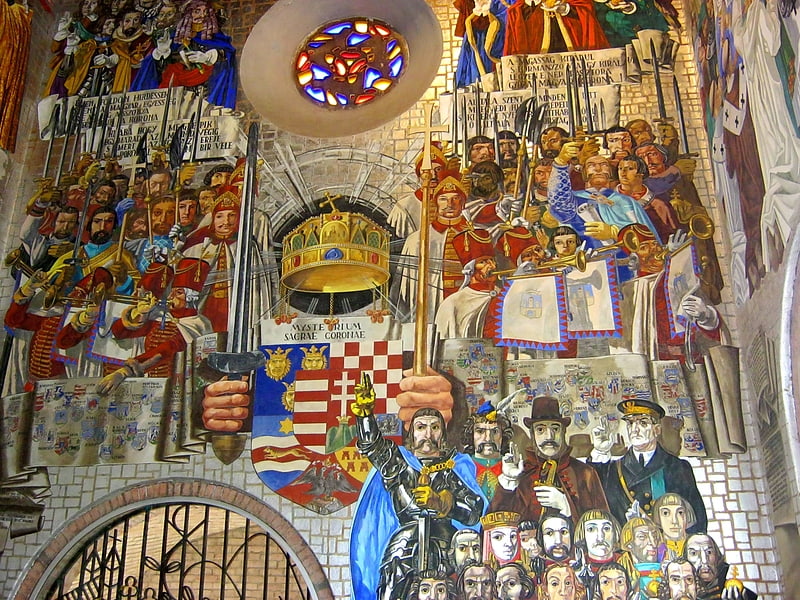
St. Stephen's Mausoleum is a memorial building to Stephen I of Hungary in Székesfehérvár, Hungary. It was built in the late 1930s behind the excavated ruins of the Basilica of the Assumption of the Blessed Virgin Mary where Stephen had been originally buried, and contains the 11th-century sarcophagus of the deceased king.[34]
Address: Koronázó tér, Székesfehérvár
Szombathely Cathedral, Szombathely

Also known as: Sarlós Boldogasszony-székesegyház
Cathedral in Szombathely, Hungary. The Our Lady of the Visitation Cathedral also called Szombathely Cathedral or Cathedral of the Visitation of Our Lady is the name given to a religious building affiliated with the Catholic Church in the city of Szombathely in Hungary, it is the principal church of the Diocese of Szombathely.
With the establishment of a diocese in 1777 the construction of a cathedral became necessary. A Baroque building in classical style began in 1791 and was completed in 1797. However, the interior work continued until 1814. The Cathedral of the Visitation is located in the ancient forum of the Roman city of Savaria. Melchior Hefele architect was responsible for the plans.[35]
Address: 9700 Szombathely, Széchenyi István u. 8, Szombathely
Kovács Margit Ceramics Collection, Szentendre
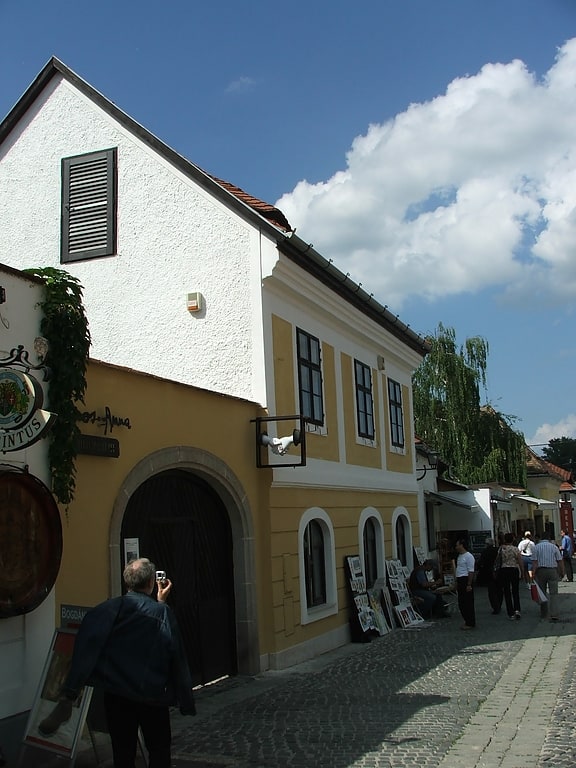
The Ámos Imre - Anna Margit Memorial Museum is a museum exhibition space founded in 1984 in Szentendre, at 10-12 Bogdányi Street, in the so-called Paulovics House.
Address: Vastagh György u. 1, 2000 Szentendre
St. Anne's Cathedral, Debrecen
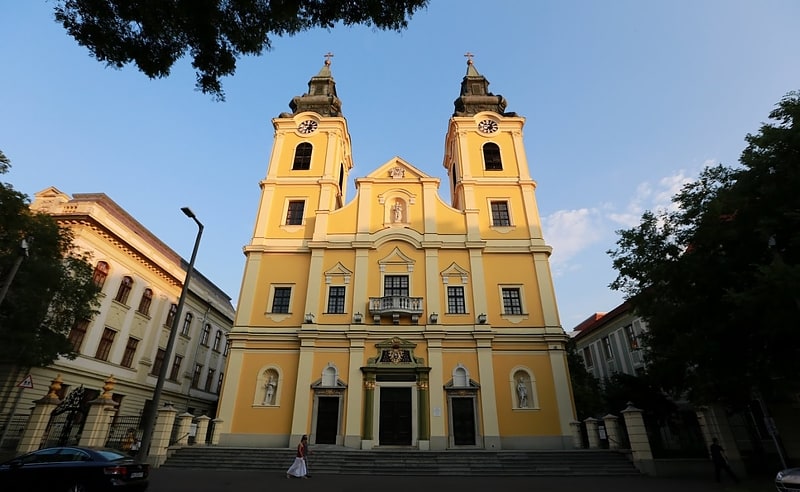
Also known as: Szent Anna-székesegyház
Cathedral in Debrecen, Hungary. The St. Anne's Cathedral also called Debrecen Cathedral It is a Catholic religious building that since 1993 works as the cathedral of the Diocese of Debrecen-Nyíregyháza, is located in the city of Debrecen, Hungary.
The baroque church was built in 1721, commissioned by Cardinal Imre Csáky, by the Milanese architect Giovanni Battista Carlone and dedicated to St. Anne in 1746. In 1811 the church tower was damaged by fire in 1834 and were built the two towers projected by Ferenc Povolny. In 1928 new entrances were added and restoration works were being renovated entrance with the creation of a wide staircase, and the three statues on the facade dedicated to St. Emeric of Hungary, St. Stephen and the Virgin and Child Jesus.[36]
Address: Szent Anna u. 15, 4024 Debrecen
St. Michael's Cathedral, Veszprém
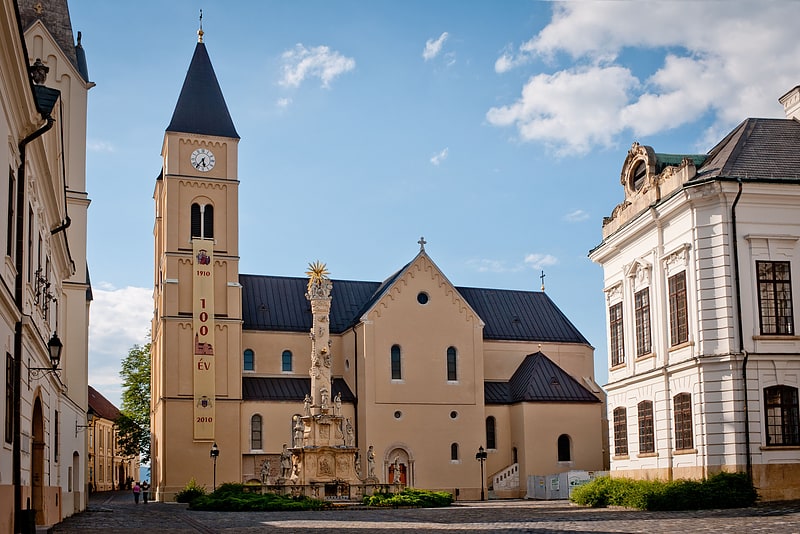
Also known as: Szent Mihály-székesegyház
Cathedral in Veszprém, Hungary. St. Michael's Cathedral Basilica, also called Veszprém Cathedral, is a religious building of the Catholic Church that serves as the cathedral of the Archdiocese of Veszprém and is located in the city of Veszprém, Hungary.
Archaeological findings indicate that already in the year 1001 there was a church on the site. This church is mentioned in documents stored in the Abbey of Pannonhalma. In 1380, after a fire, the cathedral was rebuilt in the Gothic style and dedicated in 1400. To this period belong parts of the still existing crypt. The building was partially destroyed later during the Turkish occupation. In the eighteenth century the church was restored in the Romanesque and Gothic styles, the surviving baroque elements were eliminated in the restoration of 1907–1910. Between the eighteenth and nineteenth centuries, the cathedral hosted musical events such as concerts of works by famous European composers such as Mozart, Haydn and Ludwig van Beethoven. In 1981 the cathedral was elevated by Pope John Paul II to the rank of minor basilica. In 1993 it became the metropolitan cathedral and received from the monastery of Niedernburg the relics of Queen Gisela of Hungary, wife of Stephen I, venerated as blessed by the Catholic church and considered one of the important personalities for the church in that country.[37]
Address: Vár u. 27, 8200 Veszprém
Our Lady of the Assumption Cathedral, Kaposvár
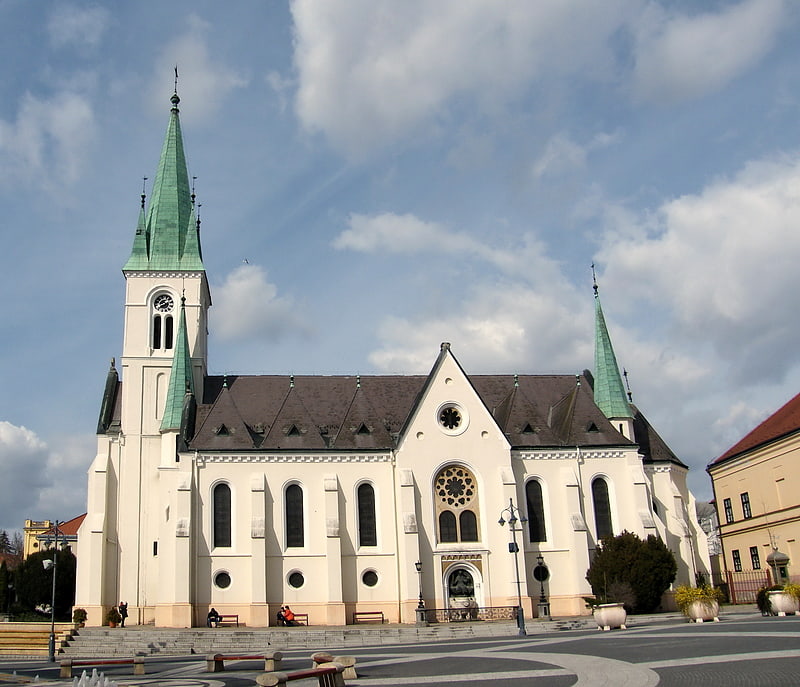
Also known as: Nagyboldogasszony-székesegyház
Cathedral in Kaposvár, Hungary. The Our Lady of the Assumption Cathedral also called Kaposvár Cathedral It is located in the historic center of Kaposvár, is a religious building affiliated with the Catholic Church which is one of the largest Christian churches in Hungary, serves as the seat of the diocese of Kaposvár. Its construction began in 1885 and was completed in 1886.
The first church was built in 1737-1744 in the Baroque style. The new neo-Romanesque cathedral was completed in 1886, after a year of work. In 1937 an image on the porch, which is representing the pastor, residents and Mayor professing his faith in Christ and the veneration of the Virgin Mary in Hungary was placed. In 1958, the church received a new organ and in 1969 underwent a complete renovation. In 1977, its inside was modified to allow the proper functioning of liturgical activities. In 2003 he was placed on the western wall plate red marble memorial priests who have served in the cathedral.[38]
Address: Kossuth ter 3., 7400 Kaposvar
Történelmi Témapark, Szombathely
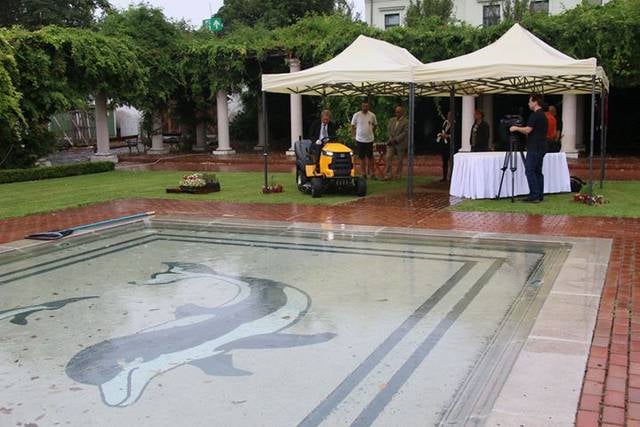
Amusement, Amusement park, Park
Address: Aréna utca 1, Szombathely
Tófürdő, Szombathely
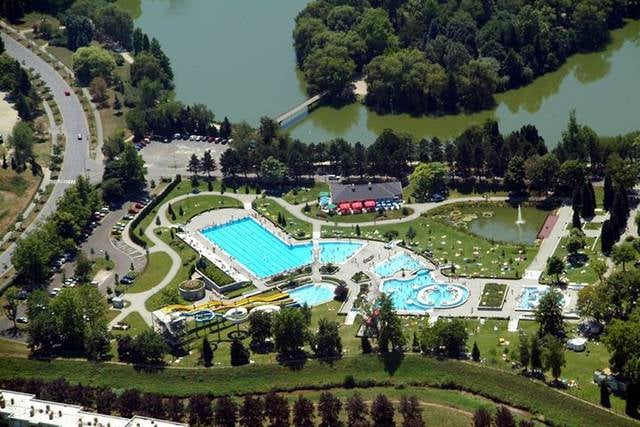
Watersports, Amusement park, Beach, Water park, Swimming
Address: Kenderesi u. 2, Szombathely
Geschriebenstein, Kőszeg
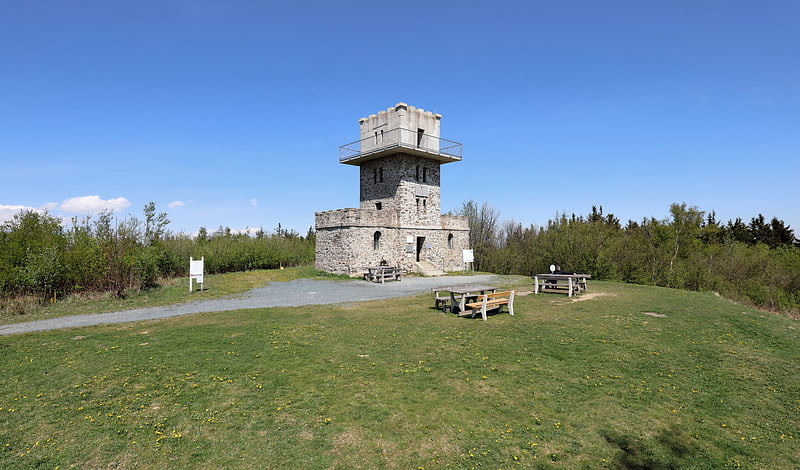
Mountain in Austria. The Geschriebenstein, less commonly called the Írott-kő in English sources, is a mountain, 884 metres high, located on the border between Austria and Hungary. It is the highest mountain of the Kőszeg Mountains, the highest point in western Hungary and highest point in Burgenland. Its height is 884 m according to Austrian sources, whereas Hungarian references mostly mention 883 m. The highest point on the Burgenland side of the border is 879 m.
Its former Hungarian names were Fenyőhegy and Szálkő. Its present name (Írottkő in Hungarian, Geschriebenstein in English and German) can be translated as written stone and is assumably derived from border stones with inscriptions between the properties of the Batthyány and Esterházy families. On the summit, there is an observation tower built in 1913. This stands exactly on the border between Austria and Hungary.
Since December 2007 the Austrian–Hungarian border can be crossed without formalities, because Hungary has joined the Schengen Agreement.
The closest towns on the Austrian side are Rechnitz and Lockenhaus. On the Hungarian side the closest municipality is Velem and the closest town is Kőszeg.[39]
Kittenberger Kálmán Növény- és Vadaspark, Veszprém
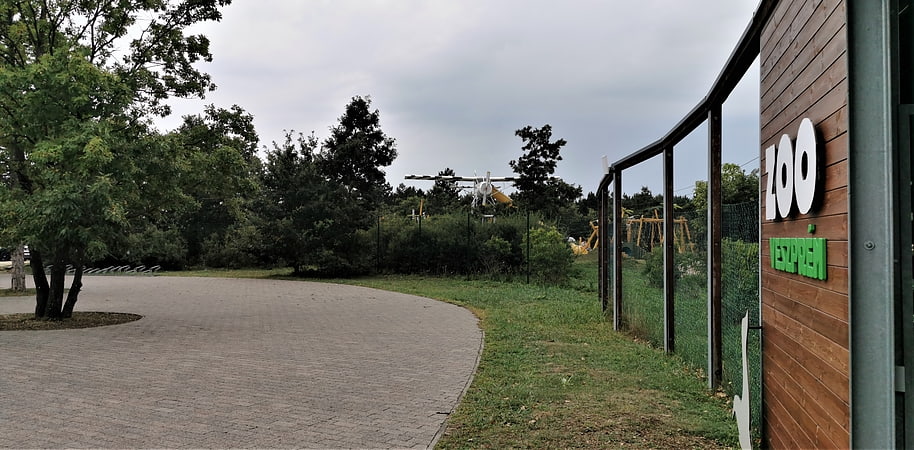
Zoo in Veszprém. The Kittenberger Kálmán Zoo and Botanical Garden is located in Veszprém, Hungary. The zoo is one of the most popular tourist attractions in the region, just 15 kilometres away from Lake Balaton. The zoo offers entertainment for both young and elderly visitors. The Kittenberger Kálmán Zoo and Botanical Garden, opened on 1 August 1958, was built in five months through the support of community volunteers.[40]
Address: Kittenberger Kálmán u. 17., 8200 Veszprém
Jurisics Castle, Kőszeg

Also known as: Kőszegi vár
Cultural center in Kőszeg, Hungary. Jurisics Castle, named after Croatian nobleman Nikola Jurišić is located in Kőszeg, Hungary.[41]
Address: Rajnis utca 9, 9730 Koszeg
Firewatch Tower, Sopron
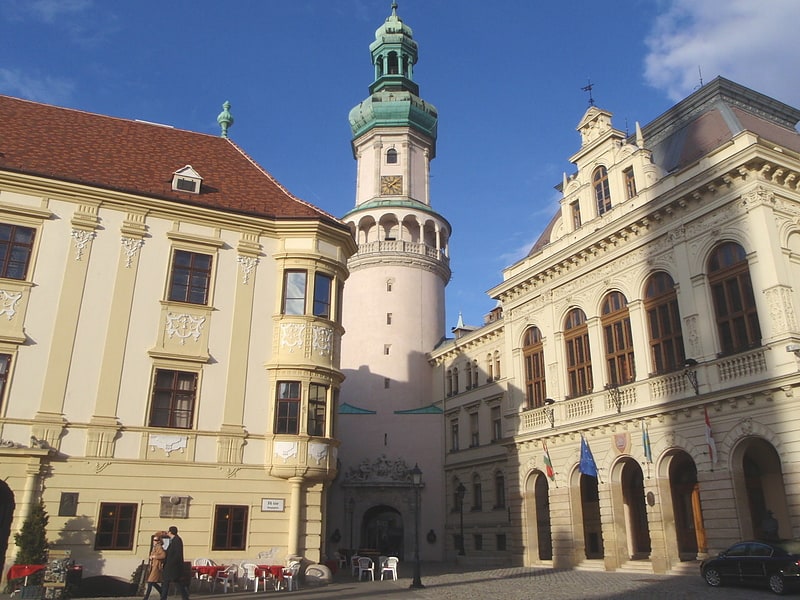
City gate, Top attraction
Address: Fö tér 1, Sopron
Hungarian Greek Catholic Church, Nyíregyháza
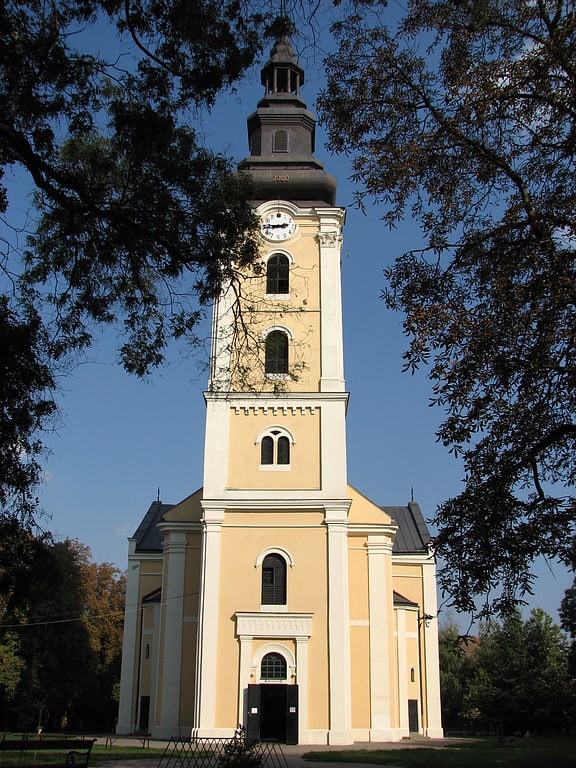
Also known as: Magyar görögkatolikus egyház
Catholic church in Nyíregyháza, Hungary. The Hungarian Greek Catholic Church or Hungarian Byzantine Catholic Church is a metropolitan sui iuris Eastern Catholic particular church in full communion with the Catholic Church. It is headquartered in Debrecen. Its liturgical usage is that of the Byzantine Rite in the Hungarian language.[42]
Address: Bethlen Gábor u, 7, Nyíregyháza
Arpad bath, Székesfehérvár
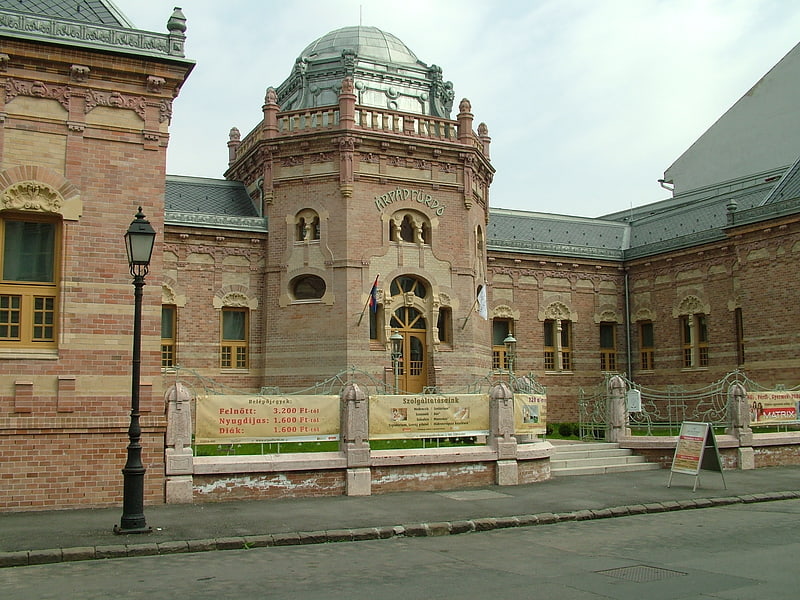
Watersports, Arab bath, Thermal spa, Spa, Swimming pool, Swimming
Address: Kossuth utca 12., 8000 Szekesfehervar
Kecskemét Cathedral, Kecskemét
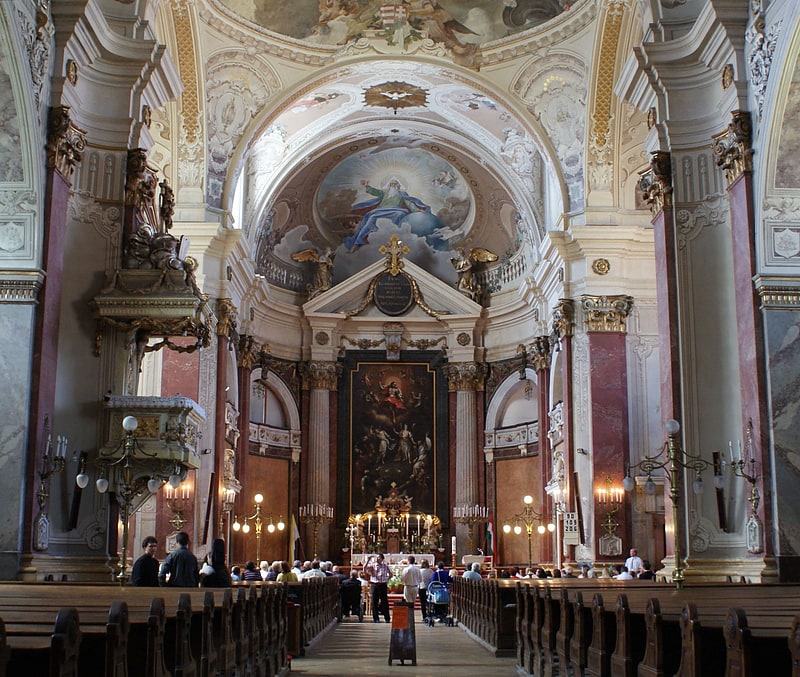
Also known as: Nagytemplom
Catholic church in Kecskemét, Hungary. The Co-Cathedral of the Ascension of the Lord also called Kecskemét Cathedral is a religious building affiliated with the Catholic Church located in the city of Kecskemét, Hungary, serves as the Co-Cathedral or alternate cathedral of the Archdiocese of Kalocsa-Kecskemét. It is dedicated to the Ascension of Christ.
The church was built between 1774 and 1806 in the Baroque style and remains the largest church in the Pannonian Plain. The original design corresponds to Gáspár Osvald, but the construction management was entrusted to Balthasar Fischer. Already in 1819 the tower of the church burned down, and had to be renewed until 1863 then receiving its current form.[43]
Address: Kossuth tér 2, 6000 Kecskemét
Veszprém Aréna, Veszprém
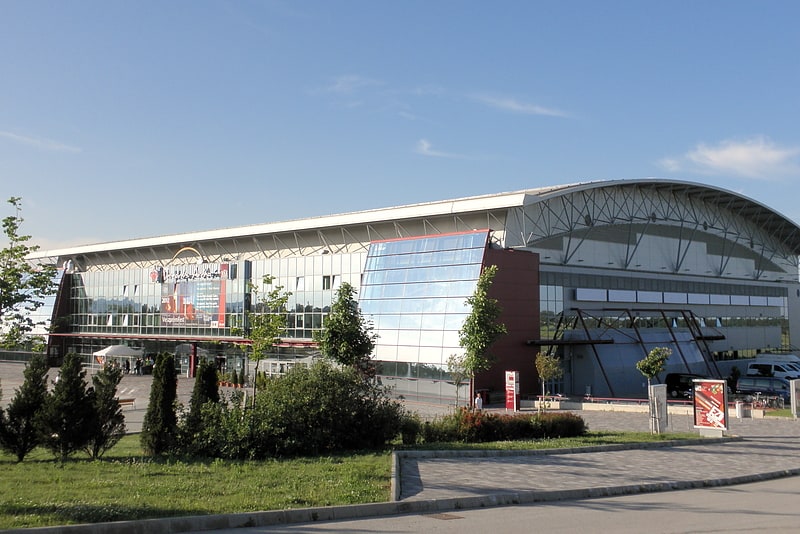
Sports ground in Veszprém, Hungary. Veszprém Aréna is an indoor sports and events hall in Veszprém, Hungary, known for its enthralling atmosphere. It is the home ground of the top-class handball club Telekom Veszprém KC, that regularly host the best teams of Europe.
The city has a first division women's handball club as well, which played in the Veszprém Aréna until 2011; but thanks to its field dimensions, the arena is able to host any sort of sporting or cultural events, such as basketball or volleyball matches, martial arts shows, concerts, exhibitions and conferences. It also has a separated lounge, that is capable alone to organize smaller events, be it a party night or a wedding.[44]
Address: Kulso-kadartai ut 5., 8200 Veszprem